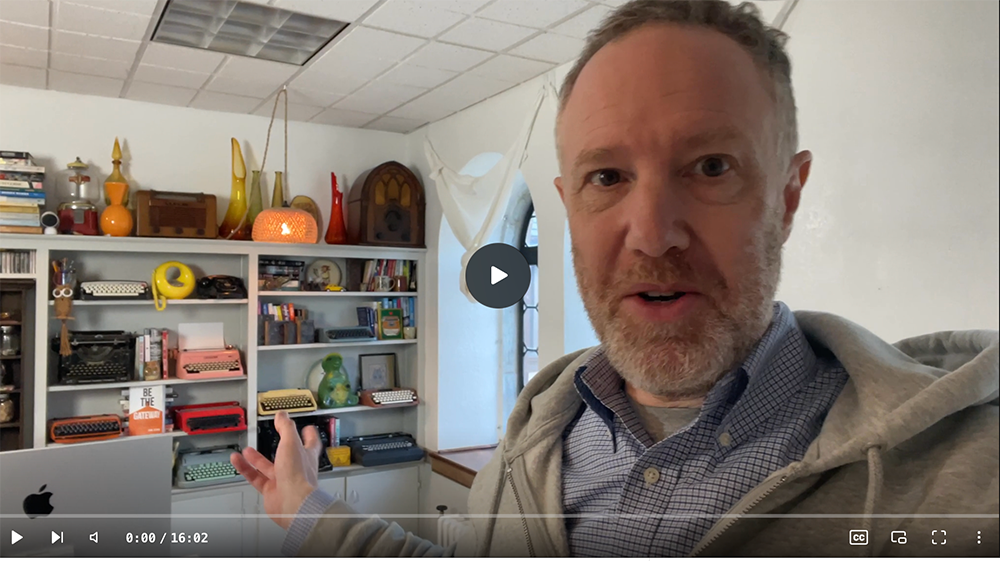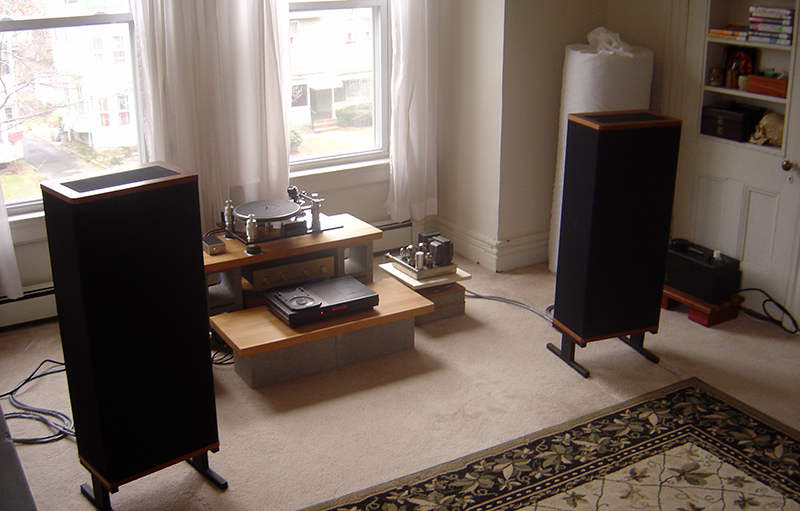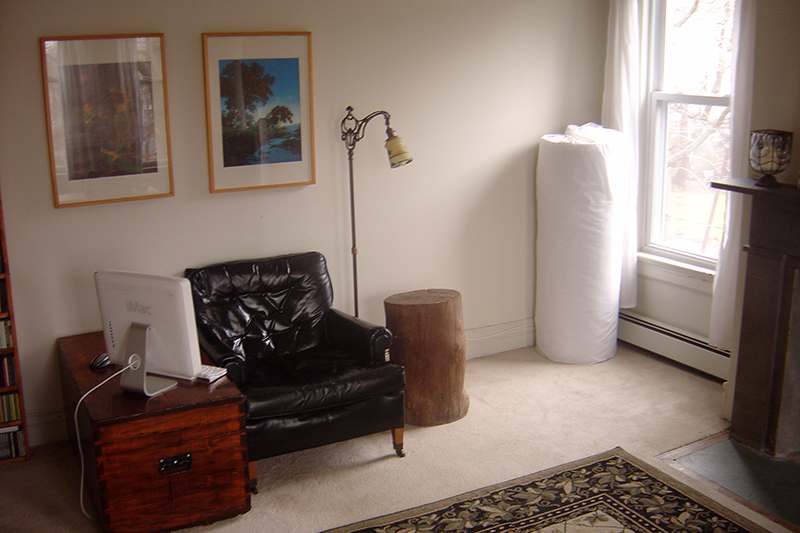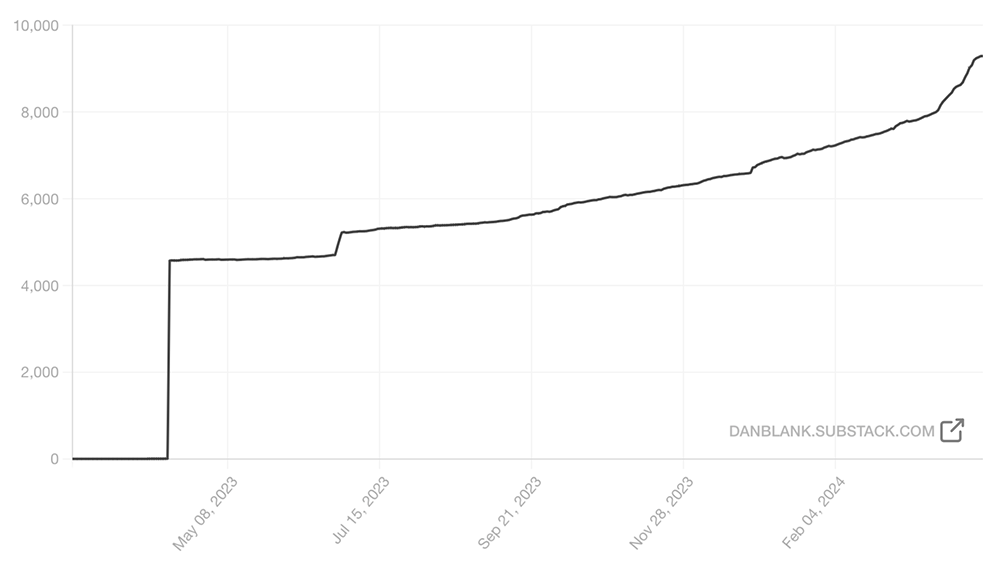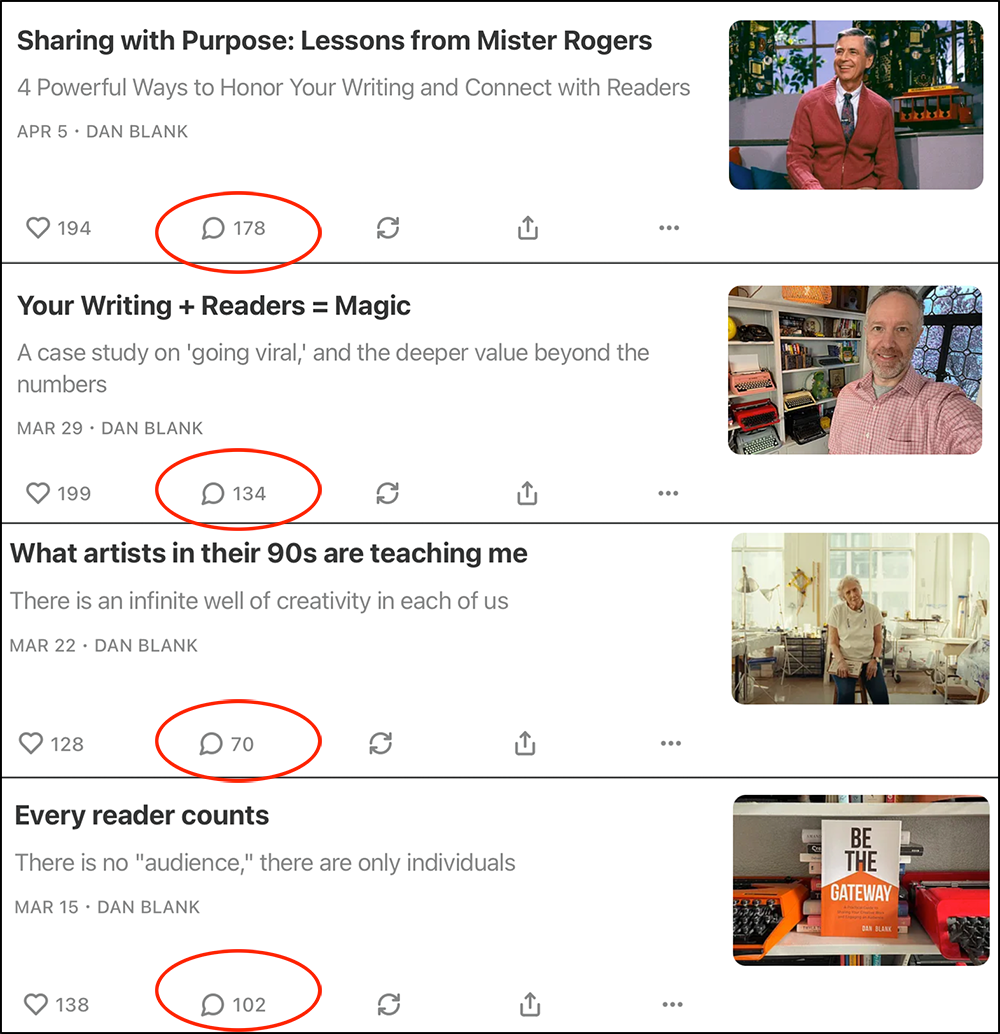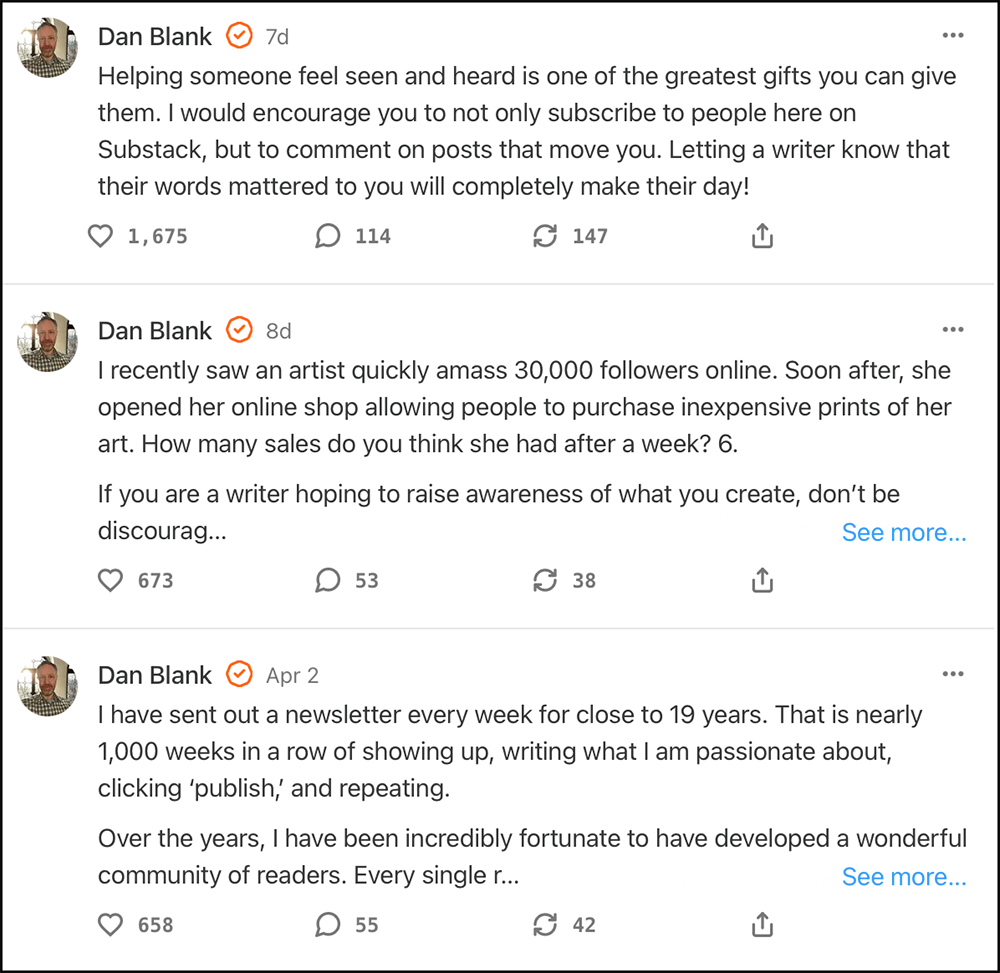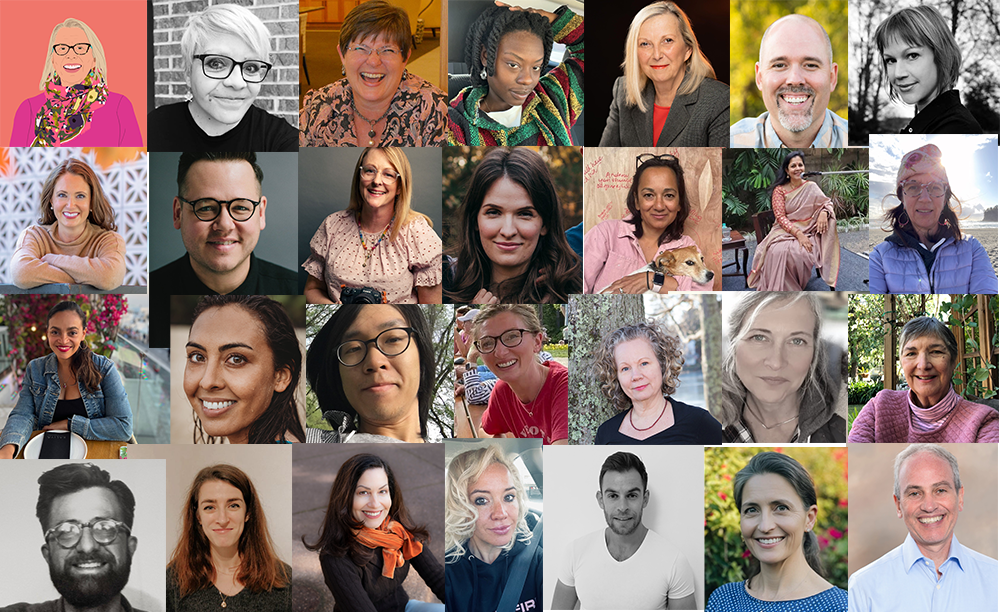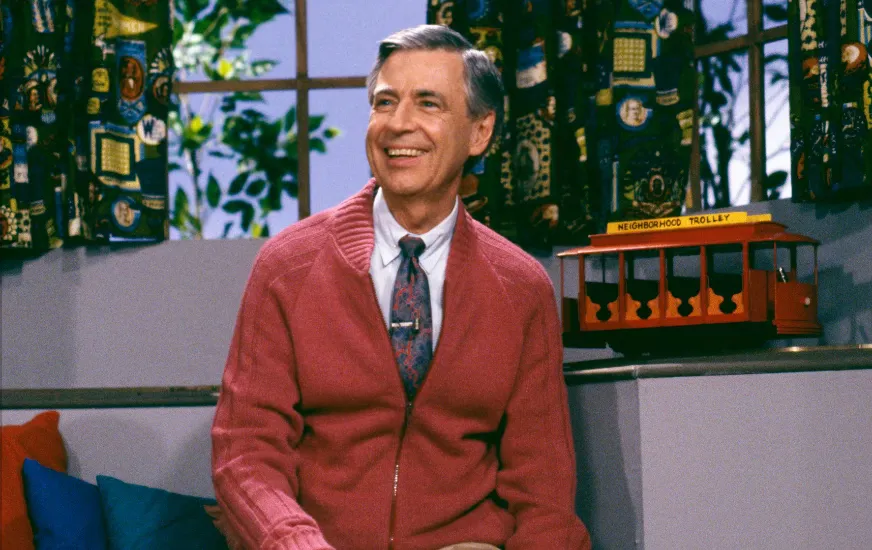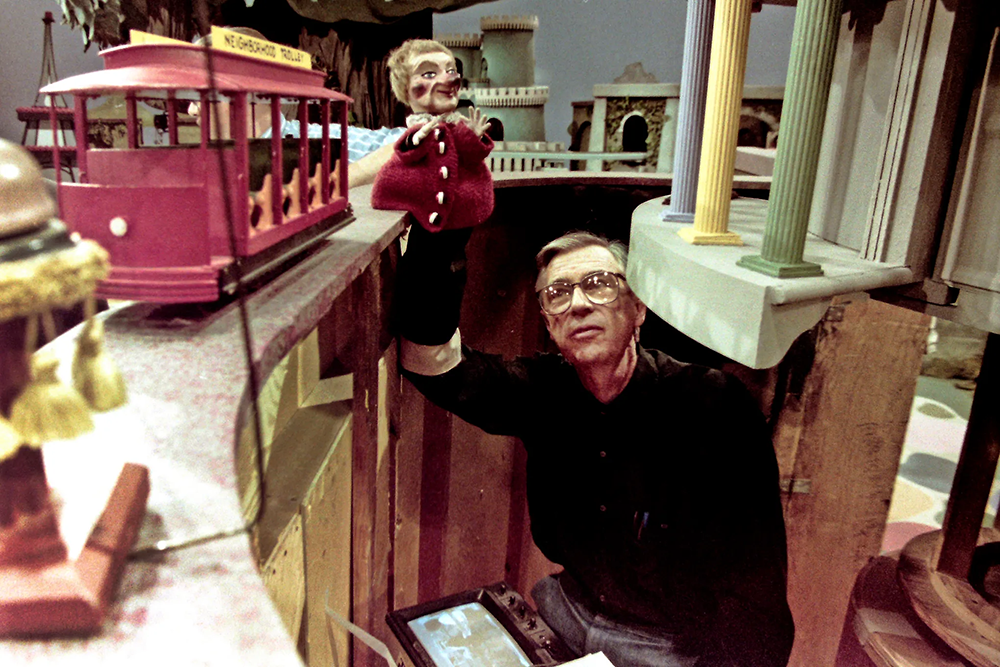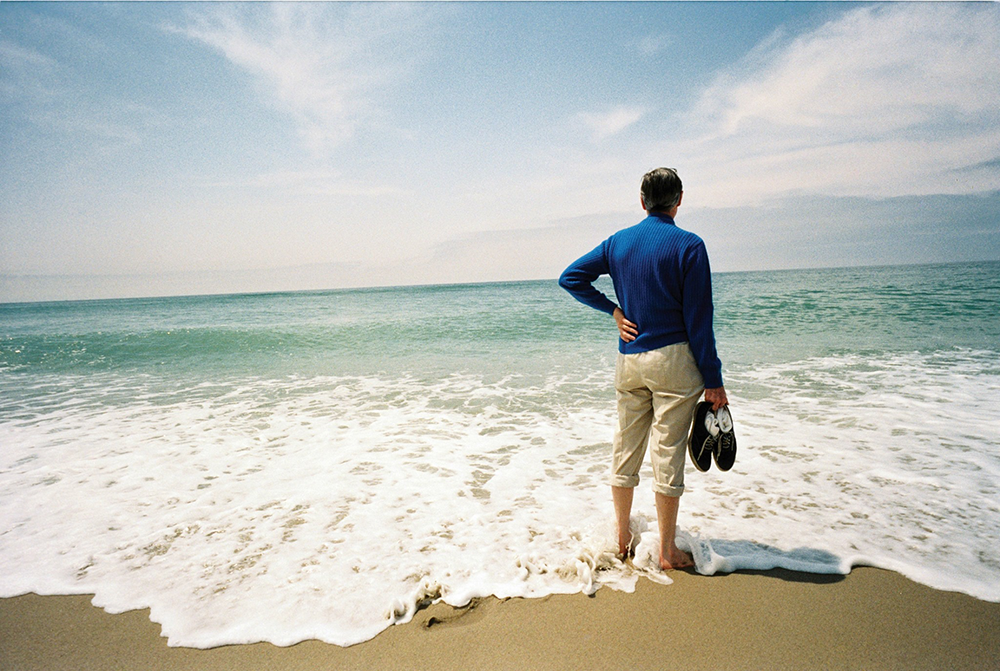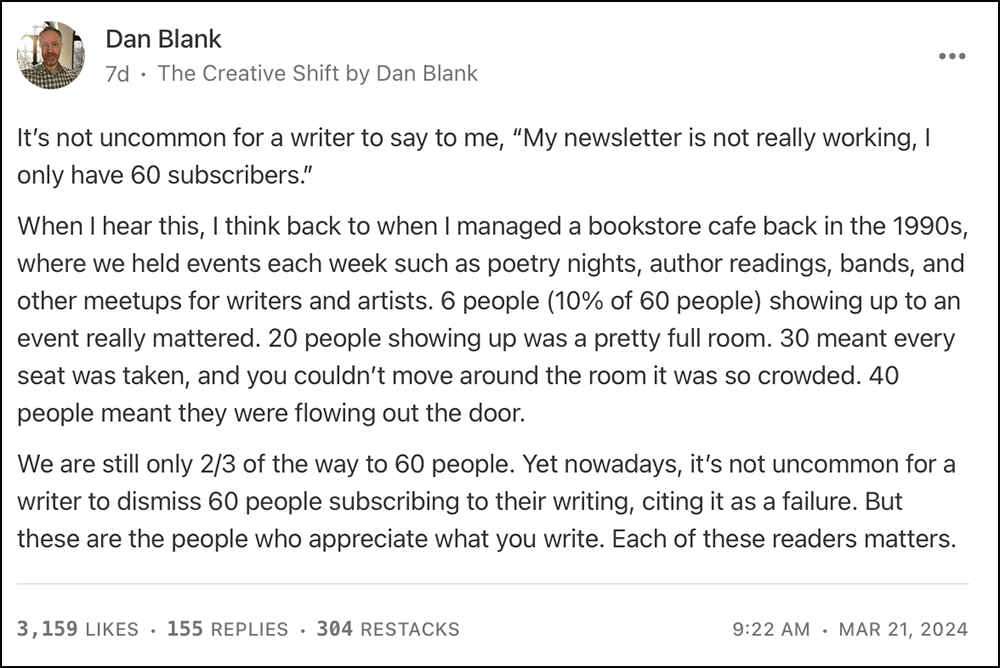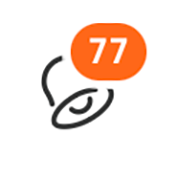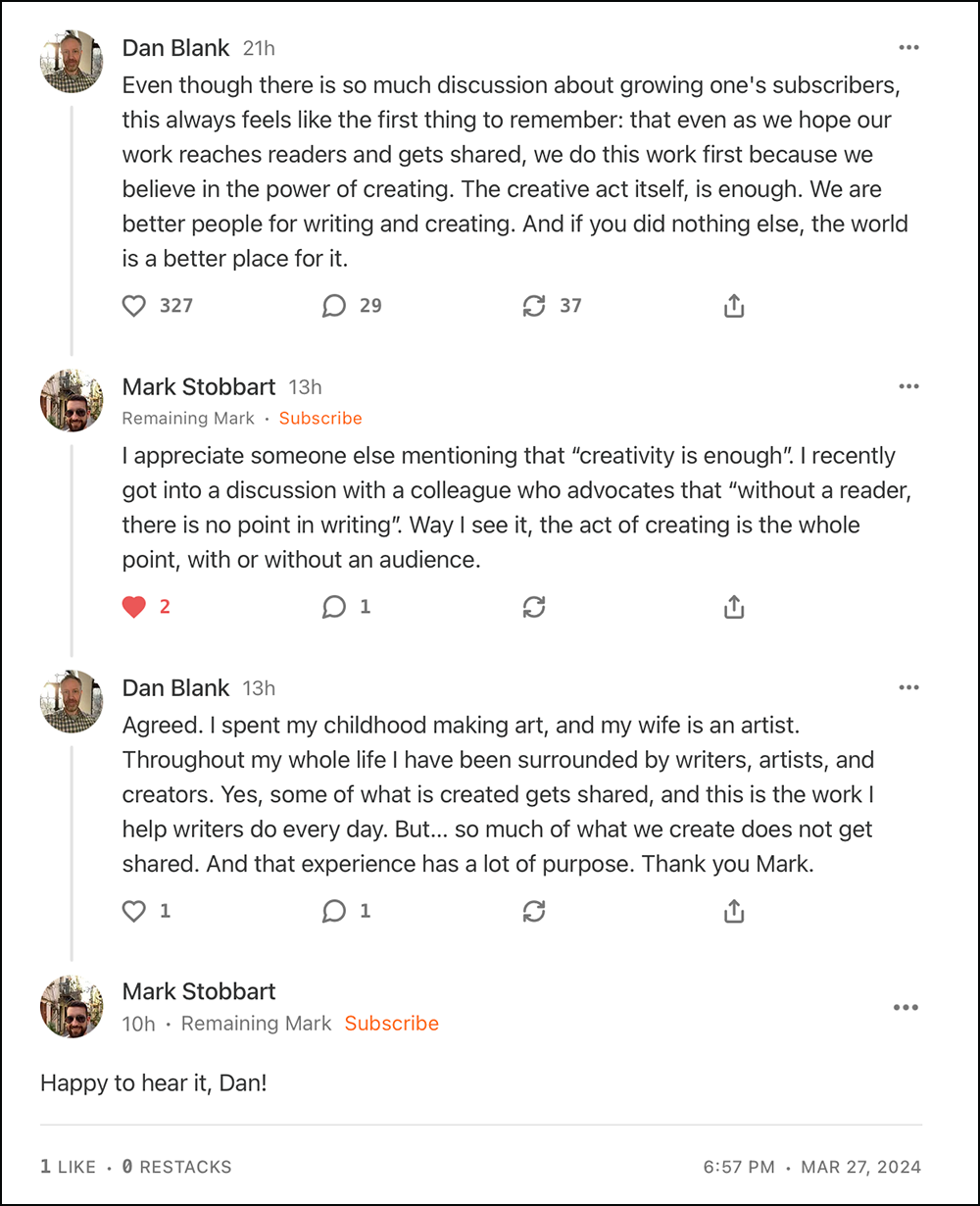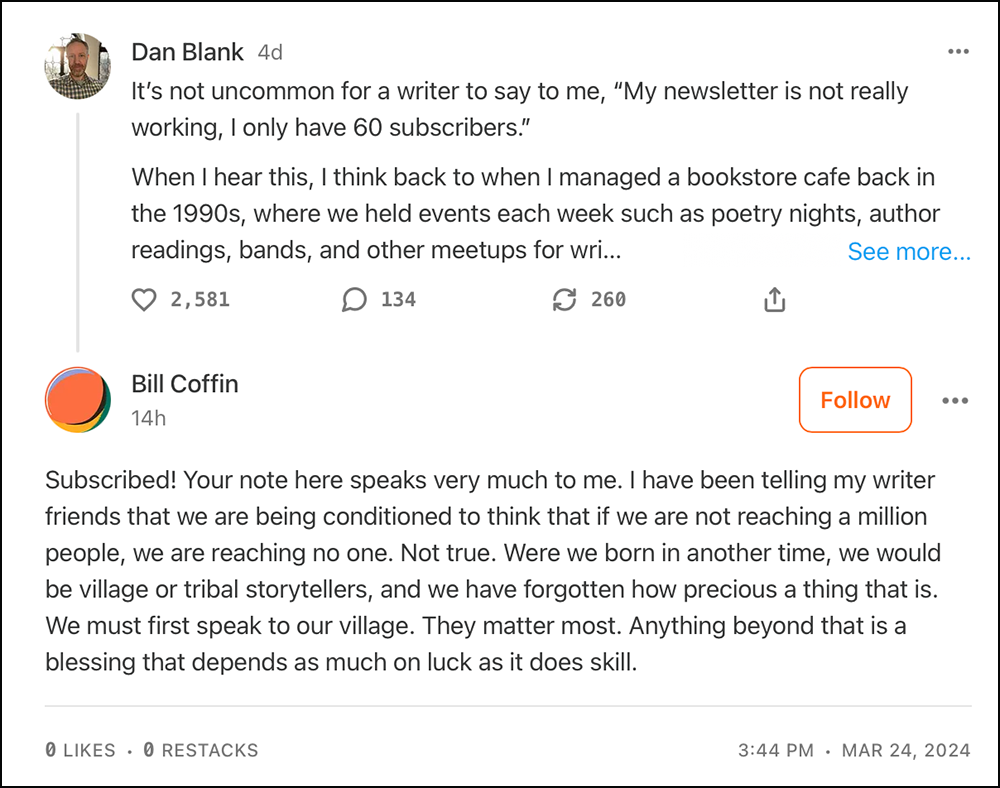Today I want to share a post that is a little more personal than usual. But I will also try to pull some lessons from all of this to help you find more fulfillment and success in sharing your writing with readers.
So this has been a complicated week for me because of three specific moments. The theme I keep coming back to for each of them is this one word: caring. Here are the three things that happened this week:
- My mom moved into a nursing home just down the road from me. She had previously lived in another state. Without question, this moment eclipsed the others in this list by a wide margin.
- We installed central air conditioning in our 114 year old house. This sounds so ordinary, but it meant cutting holes into every room, installing tons of equipment and ducts throughout our house.
- My wife and I celebrated her birthday with a Broadway show. We make a point to go on “date night” regularly, but this was a much bigger event.
What does all of this have to do with the things I normally write about, helping you share your writing more effectively and engaging readers? I’ve always said that how a writer develops their platform and develops a meaningful connection with their readers is about communication and trust. Caring feels like an essential underlying ingredient to both of these things.
Whenever you consider a writer, musician, artist, or other creator who inspires you, caring is often at the heart of it. That they truly care to show up to create, and you show up to appreciate it.
Below are the three things I have been reflecting on this week with regards to caring and why it is so important in how we create and share. Let’s dig in…
Caring is a Feeling
As my parents aged, I found that there were often more questions than answers. More surprises and new developments that only added complexity.
But in speaking with the people who run the nursing home, I had a sense they were going to make the process less complex, while providing even more care. From what I have seen in the early days of the transition have been a masterclass in what caring looks like:
- You can feel when someone truly cares. The preparation for the move required an immediate continuation of care, where every aspect of mom’s needs can be met the moment she walked into the building. A week before she moved in, there was a moment that best embodies how caring was infused in this process. Someone from the nursing home called me, so excited. Right away she said, “I have good news!” She then explained some details about the medical side of the transition for my mom, and she ended with, “I was just so excited, I had to call you.” It’s hard to describe how good that felt.
- Trust is created through informality and empathy. Of course, in many ways, this transition is a very complex process. But the nursing home infused it with empathy, always attending to our needs. There was a point early in the process where I asked “When do I have to tell you if we want to be added to the waiting list or not for a spot for my mom?” Their reply: “Dan, your mom is already on the list. We’ve met with you, we understand the situation, and we will let you know when a spot opens up. If you later decide to go another direction, that’s fine.” That was another refreshing moment of how caring just made the process easier.
- Making someone feel welcome is about caring for them. The home made mom (and us) feel cared for immediately. They did this that through time and attention. First we sat for an hour, just talking with mom, as they got a feel for her needs in the moment. Within hours, they were telling us about subtle things about her health that no other caregiver had previously disclosed. The entire time, saying, “this won’t be a problem, we will get this handled, we already started working on it.”
- Honesty in caring is about sharing a process, not promising the moon. The nursing home will be taking care of so many of mom’s needs. What was so amazing in talking with them is how much they focused on sharing their process in way that felt reasonable. They said,”We aren’t perfect, but we will always be straight shooters and share everything.” There have been so many moments already where someone from the nursing home took the time to explain something specific to me, ensuring I really understood it. Which was so different from so many other facilities that I toured where they would promise a lot, but seemed to hide their processes.
- Caring is inherently about great communication. Every day this week I received two emails first thing in the morning. The first was personalized to exactly how my mom did the previous day and night. The second email is to all families who have someone in the home, with an update on what activities they participated in, what they ate, and any other notable events or visitors. I feel tuned into a community of caring.
Throughout this, the small moments really stick out. Around 2pm on the first day I met a staff member for a brief moment and was introduced. Four hours later I walked past them and they said, “Have a good night, Dan!” They remembered my name. It felt wonderful to leave my mom for the night, and know that this person, one member of a much larger staff, was already on a first name basis not just with my mom, but me.
Here is my mom with my brother (right) and I on the first day:
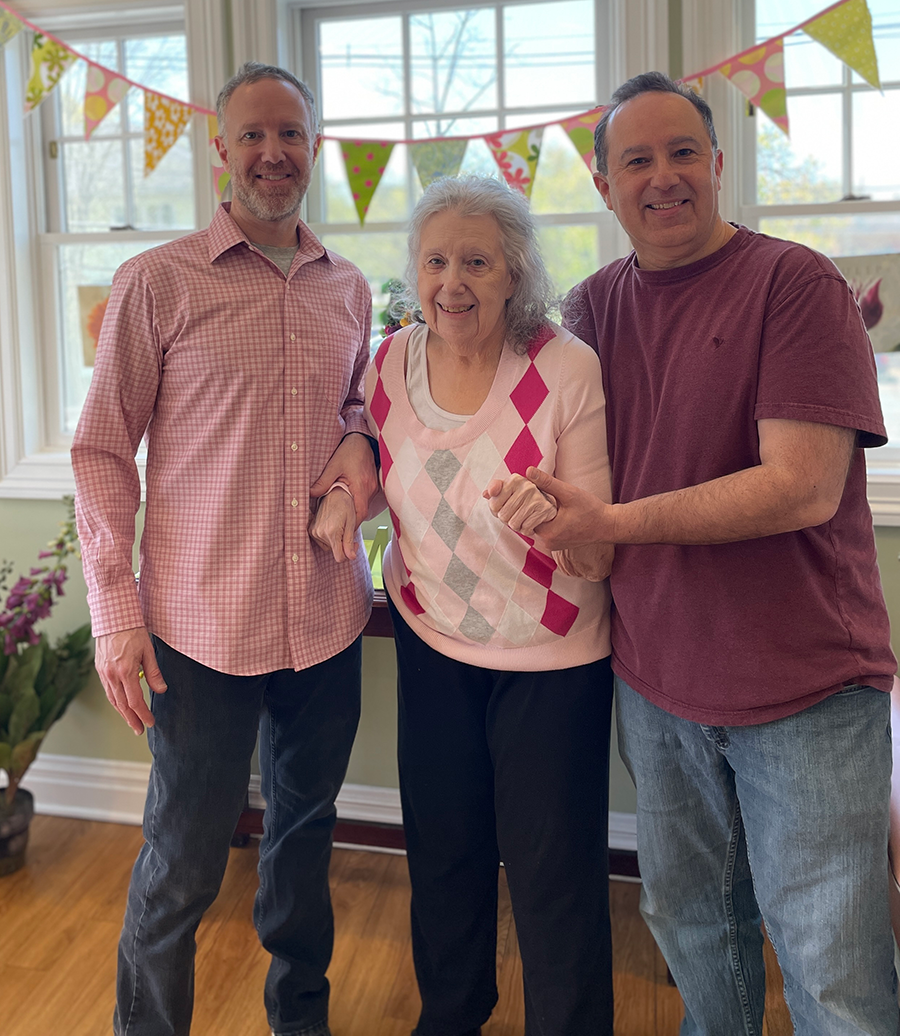
How do you know you are cared for? It isn’t found by analyzing a list of items that are checked off. It is a feeling. A feeling of being cared for. Even though this move was complex in so many ways, it is amazing to see all the people working to care for my mom and our family, as this transition happens.
When I talk with writers about what it means to show up and share what they create and why, I feel like this idea of caring is central to it. To show up because you are passionate about what you create, and know that connecting it with a reader will create a magical moment for them. You aren’t just following a template, copying a “best practice,” or using a rote process. You show up for your creative work because you care. And in sharing that, you extend that care to the moment it connects with someone who will deeply appreciate it.
Caring is Compromise
In all the HVAC forums online, people ask questions about which brand of AC unit is best. Pros and experienced people in the field all say the same thing: the brand matters dramatically less than having it installed correctly.
In the end, I went with a company who was more expensive, but who promised to work with me through tricky situations, and who I trusted. Literally, as I write this, I hear two different people sawing into walls, and yet I’m calm enough to know what they are doing, why, and feel confident that they know exactly what not to do.
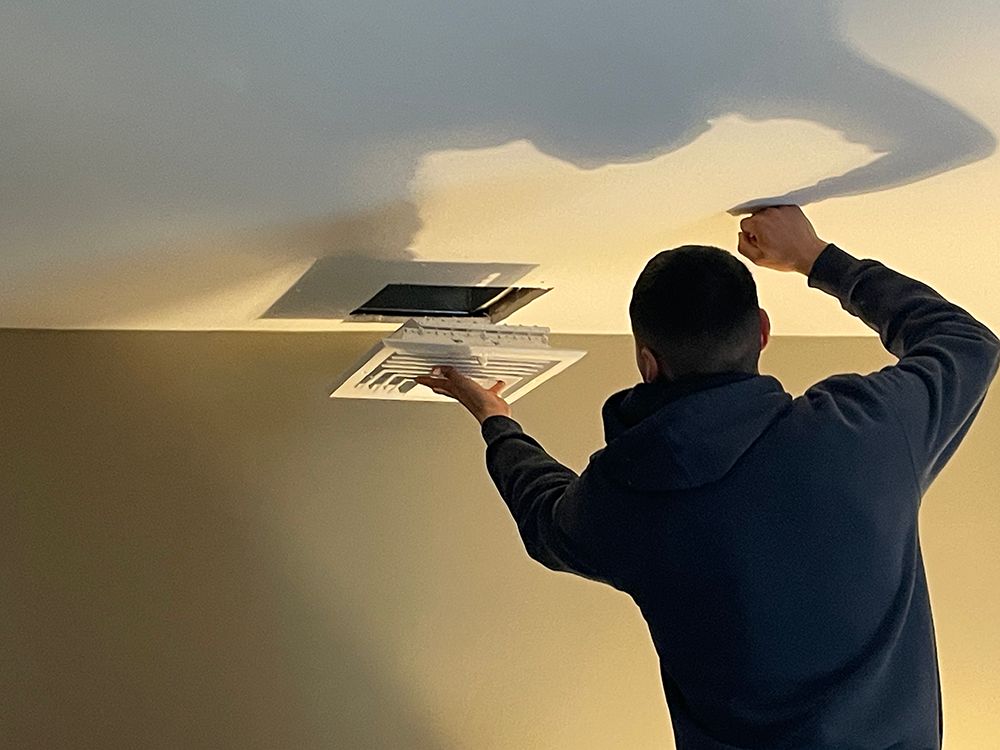
Part of this process is a willingness to compromise. On their part — to explore routing some ducts in a way that I prefer, in order to give my family more living space. The other part of it is a willingness on my part to compromise based on their professional expertise.
It’s easy to try to simplify this, and say that caring is limitless and unconditional. But in many situations there is a limit to the sacrifice one can make. That is a part of care — it often has reasonable limits.
When working with writers, they dream of someone hearing about their book, and instantly being enthralled, buying it, reading it, posting a review about it, sharing it with others. An easy example of this would be an author’s desire to just buy some social media ads, and hopefully see an immediate spike in book sales. And while that can happen, it is not a reasonable expectation for someone to see an ad about a book once, and care so much about it that they immediately pull out their credit card, then spend 8 hours reading the book.
This is why I help writers consider the process of making readers aware of their work, considering if it will resonate with them, encouraging them to buy the book, read it, review it, etc. In some of my programs, I will use the concept of the marketing funnel to illustrate this, that it is a process that moves people slowly from one level of interest to the next.
Do many authors feel they are compromising by having to focus on sharing their book, on being involved in the process of making readers aware of it? Sure. But to me, that compromise is very much about caring. About showing up to care that their writing feels complete when it reaches a reader. Yes, it takes time and attention. And isn’t that wonderful? To have the opportunity to share one’s creative work and reach those who may be inspired by it. Compromise can sometimes lead to what we hope for most: that our work truly matters to someone.
Caring is a Collaboration
It was a fascinating experience. Of course, the production value was over the top. Here is the stage:

The musical has been starring Boy George for a few months, and we were lucky to see a performance with him in it. Here he is (center in the top hat) after the show ended, along with André Ward and other cast members:

My wife and I got dressed up to match the era of the show:
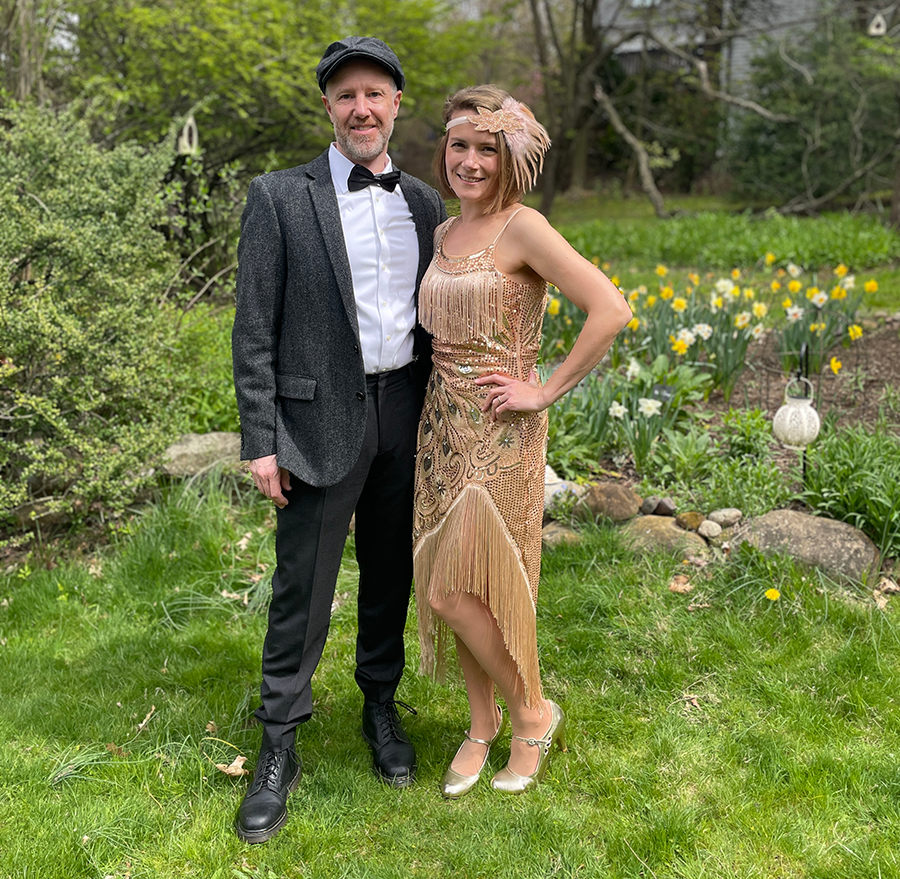
Seeing the musical was fascinating, because as an audience member, you feel cared for. You are welcomed into this unusual space, and every person you meet, every detail you encounter, is meant to make you feel that care. They seem to be saying, “We will take you on this magical journey, please trust us.”
What I saw was an incredible collaboration. First and foremost is that of the cast, production, and theater staff. How dozens of people come together to create this story, many of whom I will never see: the costume designer, person moving the rigging, the lighting director, voice coaches, the security staff, etc. — all were not seen, but their work was felt.
On stage, something jumped out at me: how much I could feel the performers caring. Every nuance was them showing up 100%. From pre-show to curtain calls, I could see how much they cared. And yet, they performed this same show twice the day before, and will do so six more times that week. Then the next, and the next.
When I turned to face the audience, I saw their own caring. People were just so happy to be a part of this, and to feel that they were an essential part of this moment. Each person in the audience has a complex life where they likely feel stretched too thin, and as if they are trying to do much with too few resources. But for a few hours, they forgot all of that and were fully present in this story and performance. During the silent moments of the show, it was incredible to be in a theater with more than 1,400 people in the middle of New York City and be able to hear a pin drop.
Many years ago, I heard this quote from Scott Johnson: “Caring is a powerful business advantage.” That completely resonated with how I view the idea of working: to show up to a craft, and find fulfillment in attending to that craft. That attention to detail and human connection are what drives momentum in our work.
A few weeks back, I mentioned ‘the power of full attention’ in my post about Mister Rogers:
“One of the most powerful gifts you can give someone is your attention — to truly see and hear them. This is something Fred Rogers was known for. People would say that when talking with him, you felt as though he was completely present in the conversation, as if no one else in the world existed.”
That is caring.
I have often described my process of helping writers reach their readers as ‘Human-Centered Marketing.’ This is a process that puts people at the center of what is happening, not technology, hacks, trends, hashtags, or tricks. This is a craft. To show up to care about what you create and that moment it connects with someone.
Please let me know in the comments below: How have you experienced caring in a situation you didn’t expect it and how did it make you feel?
Earlier this week I shared a video for my paid subscribers: “Why I have a typewriter collection: what vintage creative tools teach me about reaching readers.” This is a behind-the-scenes tour of my studio:
Thank you for being here with me.
-Dan

